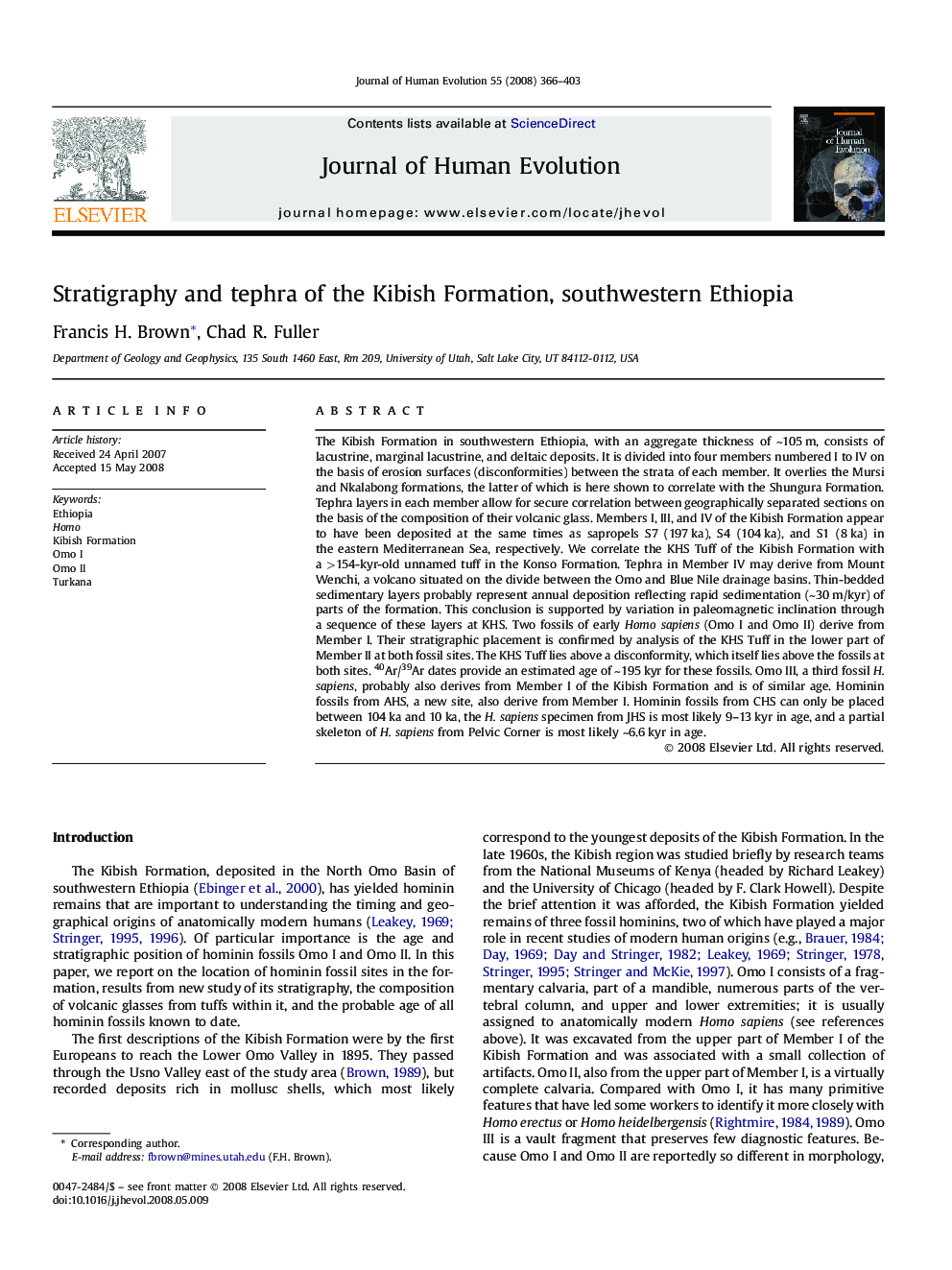| کد مقاله | کد نشریه | سال انتشار | مقاله انگلیسی | نسخه تمام متن |
|---|---|---|---|---|
| 4557023 | 1329520 | 2008 | 38 صفحه PDF | دانلود رایگان |

The Kibish Formation in southwestern Ethiopia, with an aggregate thickness of ~105 m, consists of lacustrine, marginal lacustrine, and deltaic deposits. It is divided into four members numbered I to IV on the basis of erosion surfaces (disconformities) between the strata of each member. It overlies the Mursi and Nkalabong formations, the latter of which is here shown to correlate with the Shungura Formation. Tephra layers in each member allow for secure correlation between geographically separated sections on the basis of the composition of their volcanic glass. Members I, III, and IV of the Kibish Formation appear to have been deposited at the same times as sapropels S7 (197 ka), S4 (104 ka), and S1 (8 ka) in the eastern Mediterranean Sea, respectively. We correlate the KHS Tuff of the Kibish Formation with a >154-kyr-old unnamed tuff in the Konso Formation. Tephra in Member IV may derive from Mount Wenchi, a volcano situated on the divide between the Omo and Blue Nile drainage basins. Thin-bedded sedimentary layers probably represent annual deposition reflecting rapid sedimentation (~30 m/kyr) of parts of the formation. This conclusion is supported by variation in paleomagnetic inclination through a sequence of these layers at KHS. Two fossils of early Homo sapiens (Omo I and Omo II) derive from Member I. Their stratigraphic placement is confirmed by analysis of the KHS Tuff in the lower part of Member II at both fossil sites. The KHS Tuff lies above a disconformity, which itself lies above the fossils at both sites. 40Ar/39Ar dates provide an estimated age of ~195 kyr for these fossils. Omo III, a third fossil H. sapiens, probably also derives from Member I of the Kibish Formation and is of similar age. Hominin fossils from AHS, a new site, also derive from Member I. Hominin fossils from CHS can only be placed between 104 ka and 10 ka, the H. sapiens specimen from JHS is most likely 9–13 kyr in age, and a partial skeleton of H. sapiens from Pelvic Corner is most likely ~6.6 kyr in age.
Journal: Journal of Human Evolution - Volume 55, Issue 3, September 2008, Pages 366–403